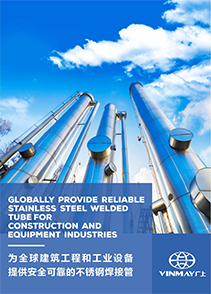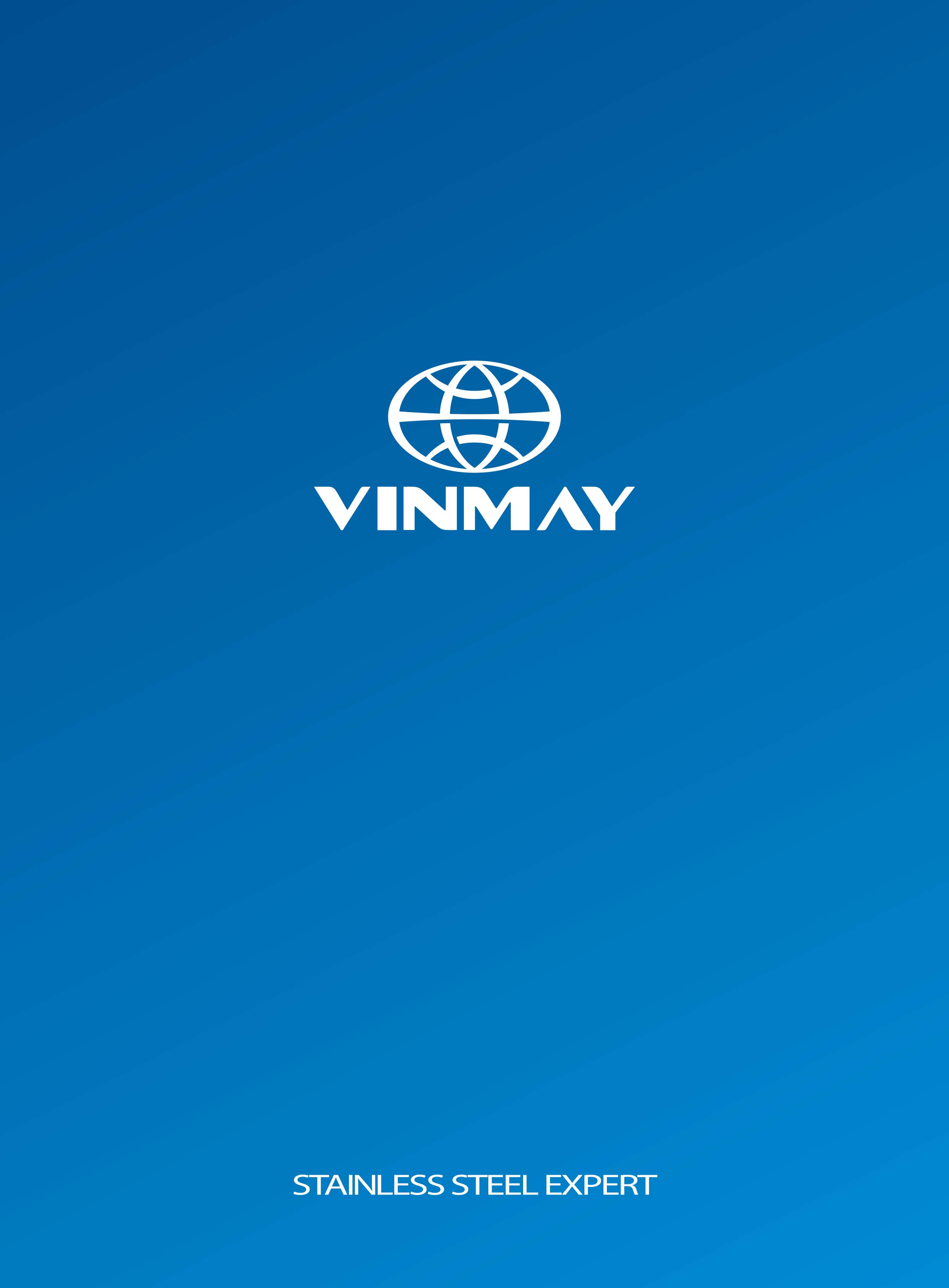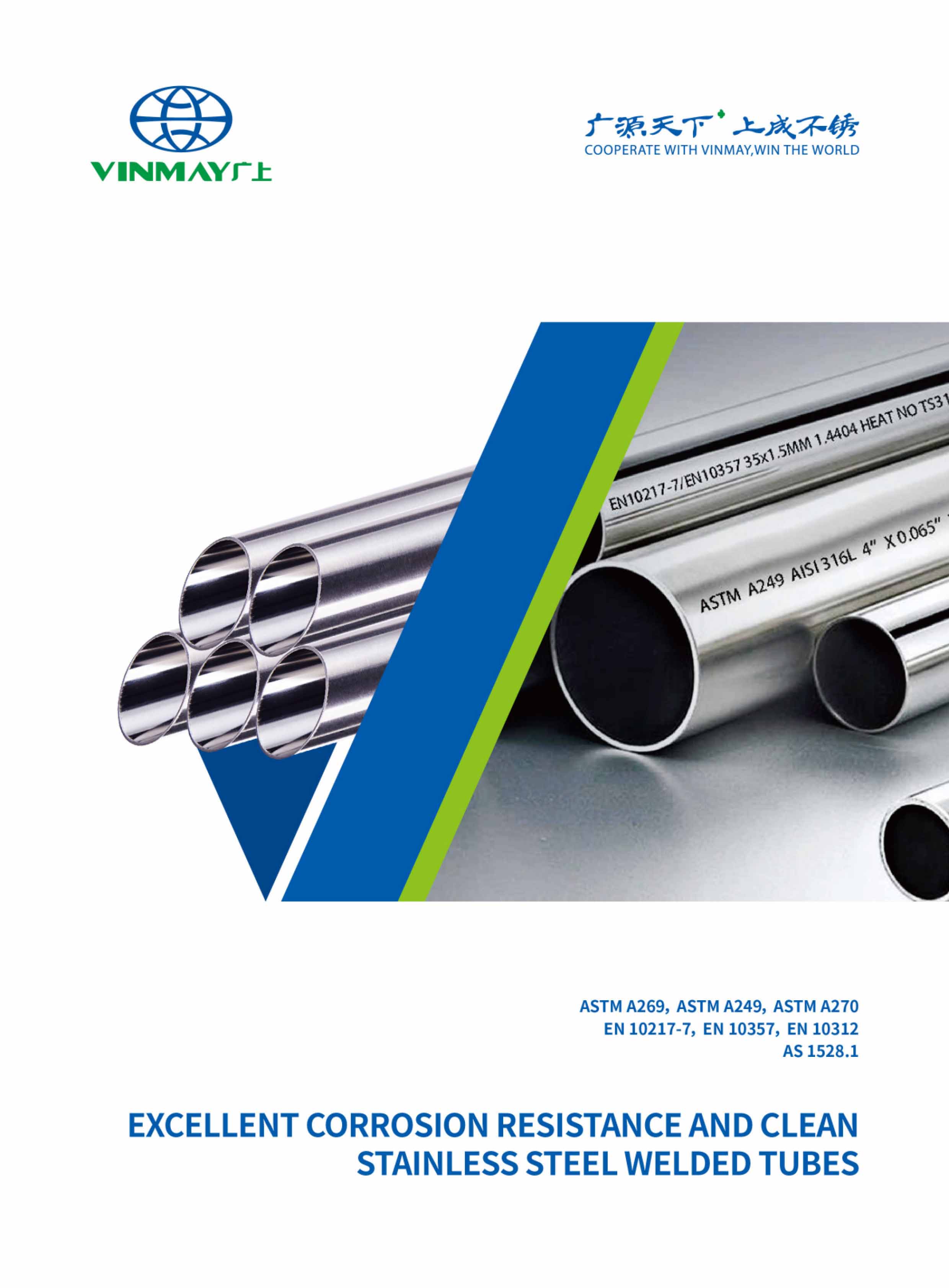Stainless steel square tubing is a popular choice for many construction and fabrication projects due to its strength and durability. It is a versatile material that can be used for a variety of applications, including frames, handrails, and supports.
Stainless steel square tubing is available in a variety of grades and finishes and can be customized to fit a variety of applications. This type of tubing is easy to install and can be used in a wide variety of applications.
Furthermore, it is easy to cut, form, and weld, making it a suitable material for a variety of projects.
Understanding the properties and characteristics of stainless steel square tubes is important for any metalworking project. Stainless steel square tubing is an essential material for many metalworking applications due to its corrosion prevention, application benefits, and quality assurance. It is also resistant to hydrogen embrittlement and offers superior corrosion resistance compared to other metals.
Square tubing is commonly used in a wide range of industries, from automotive to aerospace, thanks to its various characteristics. Its use can provide cost-savings, durability, and other advantages in numerous applications. Quality assurance is also ensured with stainless steel square tubing, as it is produced with consistent dimensions and wall thicknesses.
These qualities make stainless steel square tubing an excellent choice for many applications. Its strong corrosion resistance combined with its application benefits make it a great choice for metalworking projects. With quality assurance, it is easy to ensure that the tubing meets the specific requirements of the project.
Thus, stainless steel square tubing is a great choice for metalworking projects, providing cost-savings, durability, and other advantages. As we move to the next section, let's discuss the common uses for stainless steel square tubes.
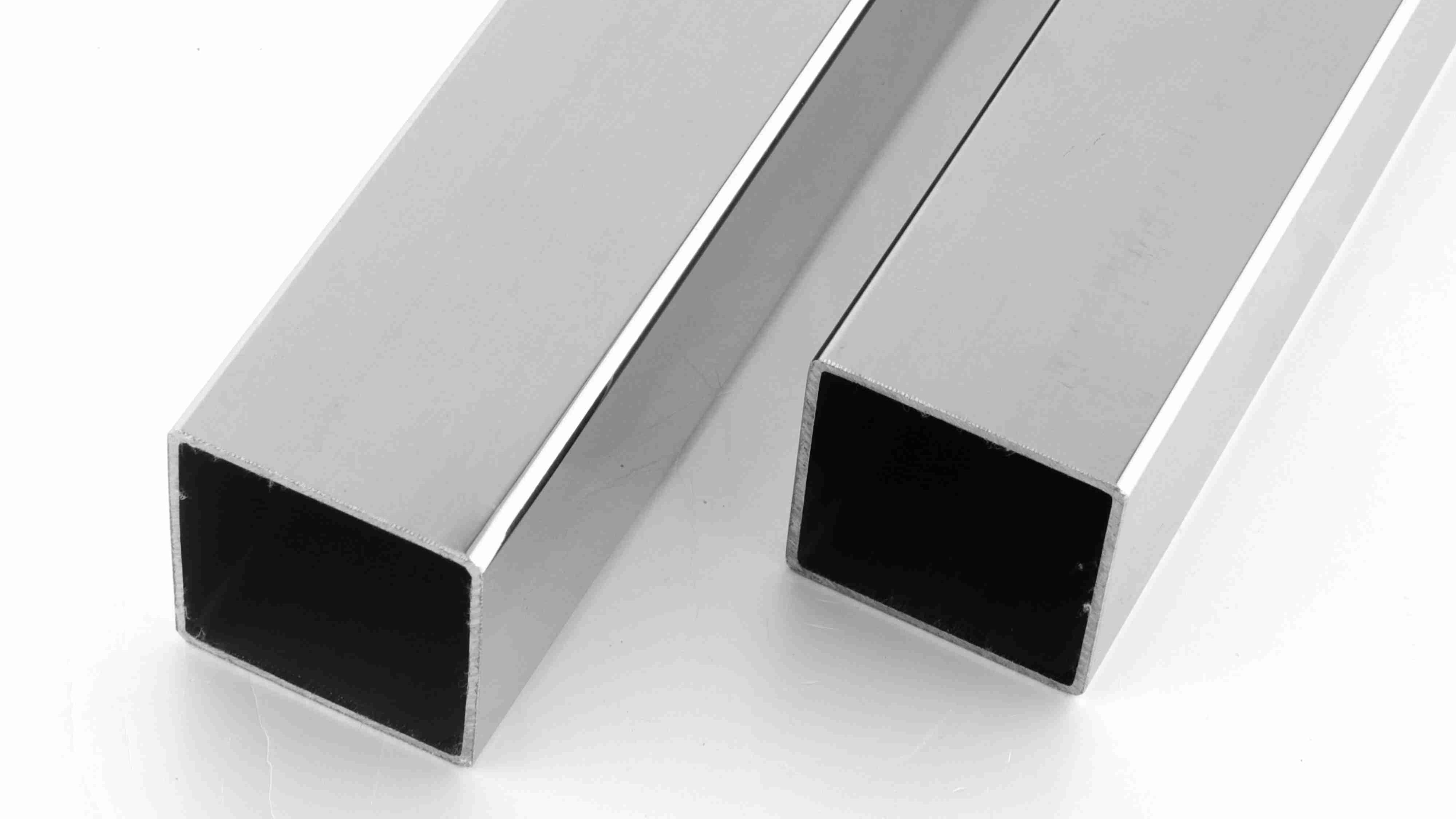
Stainless steel square tube is a versatile material that has many applications across multiple industries. It is often used in architectural projects for wall paneling, exterior railings, and bracket trims.
It is also used for table framing, quarrying, water filtration systems, and heat exchangers.
Stainless steel square tubing is increasingly becoming an attractive option for use in architectural wall paneling due to its durability, elegance, and affordability. Its various grades make it easy to choose the right product for the job and provide excellent corrosion protection. Installation methods can be tailored to fit any design trend, making it an ideal choice for any project.
Read More: Architectural Stainless Steel Tubes
Making use of stainless steel square tubing in exterior railings and bracket trims is a great way to add strength and style to any outdoor space. The tubing's corrosion resistance makes it ideal for outdoor use, while its strength adds a structural element to the design.
Cost considerations should also be taken into account when selecting square tubing for projects, as the material can be more expensive than other materials.
The installation process should be carefully managed, as improper installation can lead to structural deficiencies.
With careful consideration of the bracket trim design, corrosion resistance, tubing strength, cost considerations, and installation process, stainless steel square tubing can be a great choice for exterior railings and bracket trims.
Frequently, stainless steel square tubing is used for the construction of tables, providing an aesthetically pleasing frame and a strong, durable foundation. With welding techniques, corrosion protection, and design aesthetics all in mind, fabrication processes are used to ensure the desired outcome. Thermal insulation, when used, provides additional protection for the structure.
The benefits of using stainless steel square tubes for table framing include:
Stainless steel square tubing is a great option for table framing, providing a strong, attractive structure with reliable protection and versatility.
Aside from table framing, stainless steel square tubing is also commonly used for quarrying and water filtration systems. Water purification systems rely on the corrosion resistance of stainless steel, which is also resistant to rust and other damage caused by environmental factors. Quarry operations also benefit from the use of stainless steel square tubing, as it is durable and requires minimal maintenance. During the manufacturing process of stainless steel, no toxins or pollutants are introduced, thus making it an environmentally friendly material.
Stainless steel square tubing is also highly durable and can withstand extreme temperatures, and it is also corrosion-resistant. This makes it an ideal material for water filtration systems, as it can withstand the rigors of the purification process. Additionally, its corrosion resistance makes it a popular choice for quarry operations, as it ensures that the material remains in optimal condition, even in harsh conditions.
Recommended: Choosing the Best Stainless Steel Pipe for Water
In addition to water filtration systems and quarry operations, stainless steel square tubing is also commonly used in the construction of heat exchangers. These versatile and durable metal tubes can be used in many different ways, from heat transfer to corrosion resistance to fabrication and welding techniques, and finishing options.
The square shape of the tubing makes it ideal for heat exchangers, as it allows for efficient energy transfer, reducing the amount of energy lost in the process. Additionally, the stainless steel material is highly resistant to corrosion, making it ideal for use in environments with high temperatures and humidity.
The square shape and stainless steel material also make it easier to fabricate and weld, allowing for a wide range of customization options. Finishing options can also be added, such as polishing and painting, to further customize the look and feel of the heat exchanger.
Recommended: Stainless Steel Tube for Heat Exchanger
In addition to their use in heat exchangers, stainless steel square tubes are also frequently employed in the construction of mining screens. These tubes provide a combination of strength, corrosion prevention, and welding capability for the fabrication process.
They can be connected using welding techniques or adapters to join them together, and they can also be tested in strength to ensure they are up to the task. They are a preferred choice for mining screens due to their resistance to corrosion and their malleability to be bent and cut for the desired shape and size.
As a result, they are the go-to choice for durability and strength in mining screens.
One of the most common uses for stainless steel square tubes is in the construction of chemical repositories. This material is prized for its corrosion resistance, allowing for secure containment of potentially hazardous substances. Additionally, stainless steel is highly malleable, making it suitable for fabrication with a variety of welding techniques and methods.
When selecting an alloy for a chemical repository, environmental impacts must also be taken into consideration. The alloy chosen must be able to resist the corrosive effects of the chemical stored, while also being able to prevent leakage or contamination of the surrounding soil or water.
The advantages of stainless steel square tubes for chemical repositories are:
Furthermore, what makes stainless steel square tubes especially popular for heavy-duty springs is their strength and durability. Strength testing, mechanical properties, material selection, corrosion resistance, and forming techniques are key factors to consider when choosing a material for this purpose.
| Property | Stainless Steel |
|---|---|
| Strength | High |
| Corrosion | Resistant |
| Forming | Easy |
These properties make stainless steel square tubing the ideal choice for heavy-duty spring applications. Its strength and resilience are beneficial for various industries, from automotive to aerospace. Additionally, its corrosion resistance and forming techniques make it a versatile material. By choosing stainless steel, businesses can ensure they will have a high-quality product that will last for years.
Due to its strength, corrosion resistance, and forming properties, stainless steel square tubing is commonly used in petroleum pipelines. It is an ideal solution for safely and securely transporting petroleum from extraction to the refinery.
Here are the main benefits of using stainless steel square tubing:
Using stainless steel square tubing in petroleum pipelines is a reliable and economical solution for transporting petroleum products. It is also highly resistant to corrosion and allows for easy installation, making it an ideal choice for any pipeline project.
Stainless steel square tubing is a popular choice for food processing equipment due to its strength, durability, and corrosion resistance. It can be used in a variety of fabrication techniques to create a cost-effective solution for food safety. The table below outlines the types of stainless steel commonly used in food processing equipment and their respective corrosion resistance, fabrication techniques, and cost-effectiveness.
| Type | Corrosion Resistance | Fabrication Techniques | Cost Effectiveness |
|---|---|---|---|
| 304 | High | Welding, Bending | Moderate |
| 316 | Excellent | Welding, Bending | Moderate |
| 321 | Good | Welding, Bending | Moderate |
Stainless steel square tubing is an ideal choice for food processing equipment due to its corrosion resistance, fabrication techniques, and cost-effectiveness. The different types of stainless steel offer varying levels of corrosion resistance and cost-effectiveness, making them suitable for a range of food processing applications.
Using stainless steel square tubing for marine applications is becoming increasingly popular due to its strength, durability, and corrosion resistance. It provides an ideal solution for a variety of coastal corrosion, reef building, marine construction, boat maintenance, and hull reinforcement tasks.
It is lightweight yet strong, making it easy to transport and install.
It is highly resistant to corrosion and is non-magnetic, making it suitable for use in saltwater environments.
It is easy to maintain and can be reused for future projects.
Frequently, stainless steel square tubing is used in a variety of automotive components for its strength, durability, and corrosion resistance. Protective coatings, corrosion prevention, cost analysis, fabrication techniques, and welding techniques are just a few of the considerations when using stainless steel square tubes in automotive applications. The table below outlines common uses for stainless steel square tubes and the benefits they provide.
| Use | Benefits |
|---|---|
| Body parts | Strength, durability, corrosion resistance |
| Exhaust systems | Heat-resistant, low-maintenance |
| Brake lines | Corrosion prevention, vibration dampening |
| Fuel system components | Easy fabrication |
Stainless steel square tubing is a cost-effective material for automotive components, especially when compared to other materials. With its numerous benefits, stainless steel square tubing is a great choice when looking for a durable, reliable, and cost-effective material for automotive components. The next section will discuss the use of stainless steel square tubing in fluid handling systems.
In addition to automotive components, stainless steel square tubing is also commonly used in fluid handling systems for its strength and durability. It is a popular choice due to its energy efficiency, corrosion resistance, and ability to be cut, welded, and installed with ease. These features make it suitable for applications such as piping systems, hydraulic systems, and heat exchange systems.
The versatility of stainless steel square tubing allows for a variety of cutting techniques, welding methods, and installation methods to be used. Its strong and durable nature makes it a great choice for fluid handling systems, as it can withstand high pressure and temperatures, while still maintaining its structural integrity.
Additionally, its corrosion-resistant nature makes it a great choice for long-term use, as it will not rust or corrode due to exposure to different elements.
Due to its strength and corrosion resistance, stainless steel square tubing is a popular choice for gas lines. It is a cost-effective option for a variety of applications, such as sewer lines, and it meets safety standards for gas pressure.
The welding techniques used to join square tubing together are strong and reliable, providing an additional layer of corrosion protection. Furthermore, the stainless steel square tubing is easily cut and shaped for custom applications, making it suitable for a variety of gas line projects.
As a result, it is a cost-effective and reliable choice for many gas line projects.
Additionally, stainless steel square tubing is often used in lightweight structural applications, such as for furniture, fencing, and railing. Its corrosion resistance, strength, and cost make it a great choice for metal fabrication projects and welding techniques. It offers:
Stainless steel square tubing is an excellent choice for projects that require lightweight construction, corrosion resistance, and metal fabrication. It can be used for a variety of projects where welding techniques and corrosion resistance are required. Despite its durability, it is still cost-efficient compared to other metals.

The most common grades of stainless steel square tubing are:
Each grade offers different characteristics, including corrosion resistance, strength, and ductility. Depending on the application, the right grade of stainless steel square tubing should be selected.
304 stainless steel square tubing is a widely used alloy renowned for its corrosion resistance, durability, and versatility. It's favored in architectural, industrial, and structural applications due to its excellent weldability and formability. This grade boasts a high corrosion resistance, making it suitable for outdoor and marine environments. Its aesthetic appeal, coupled with its robustness, makes it a prime choice for decorative applications and structural components.
304L stainless steel square tubing is a low-carbon variation of the 304 grade, enhancing its weldability while maintaining its corrosion resistance. This alloy is ideal for welding applications where post-weld annealing might be difficult or impractical. It’s commonly employed in industries requiring heavy welding, such as construction, due to its reduced risk of sensitization and subsequent corrosion.
316 stainless steel square tubes are celebrated for their exceptional corrosion resistance, especially against chlorides and acids. This grade is prevalent in industries involving chemicals, marine structures, and pharmaceuticals due to its robustness in harsh environments. Its superior strength and durability make it a go-to choice for applications where exposure to corrosive elements is high.
316L stainless steel square tubes offer the same corrosion resistance and strength as grade 316, with the added advantage of low carbon content. This carbon reduction minimizes the risk of corrosion at weld joints, making it ideal for welded structures. It finds extensive use in marine, chemical, and pharmaceutical industries where both corrosion resistance and weldability are paramount.
202 stainless steel square pipes are recognized for their cost-effectiveness and adequate corrosion resistance in less demanding environments. While not as corrosion-resistant as 300 series stainless steel, 202 is favored in decorative and less harsh industrial applications. Its affordability and moderate corrosion resistance make it suitable for various architectural and household applications, balancing functionality and economy.
These stainless steel square tubing and pipes offer a range of properties suited to diverse applications, ensuring structural integrity, corrosion resistance, and aesthetic appeal across industries.
Learn More: Stainless Steel Tube 304 Vs 316
Stainless steel square tubes are available in a variety of finished surfaces, including mirror finish and satin finish.
These finishes provide different levels of reflectivity and texture, so it is important to consider how the tubes will be used and which finish would be the best fit.
Given the wide range of available finishes for stainless steel square tubes, a mirror finish is an increasingly popular choice for many applications. It provides optimal aesthetic appeal and is ideal for projects that require a reflective, high-luster surface. Fabrication techniques, tooling options, and fabrication costs all have a significant impact on the quality of the mirror finish, as does quality control during the production process.
Additionally, the mirror finish provides superior corrosion resistance, making it a perfect choice for many industries.
Most stainless steel square tubes feature a satin finish, which is characterized by a smooth surface with a subtle luster. It is most often used for decorative purposes due to its aesthetic appeal. However, it is also known for its corrosion resistance and low maintenance needs, making it suitable for all kinds of applications.
When it comes to the installation process, welding techniques are usually used to join the tubes together. It is important to choose a welding technique that is suitable for the material to ensure a strong and secure connection. Additionally, since the satin finish is delicate, proper care should be taken during installation to prevent any damage.
| Advantages | Disadvantages |
|---|---|
| Aesthetic Appeal | Delicate Finish |
| Corrosion Resistance | Installation Process |
| Low Maintenance Needs | Welding Techniques |

Stainless steel square tubes are engineered to meet diverse industry needs, and their specifications adhere to various international standards. These standards ensure consistency, quality, and compatibility across different applications. Understanding these standards can be pivotal in selecting the right stainless steel square tubes for specific projects or applications.
ASTM Standards: The American Society for Testing and Materials (ASTM) sets stringent standards for stainless steel square tubes. ASTM A554 is a widely recognized standard that outlines the requirements for welded stainless steel mechanical tubing, including square tubes. It covers various grades, sizes, wall thicknesses, and finishes, ensuring suitability for structural, ornamental, and mechanical purposes.
EN Standards: The European Committee for Standardization (CEN) issues standards known as European Norms (EN). In the realm of stainless steel square tubes, EN 10296-2 specifies the technical delivery conditions for seamless and welded stainless steel tubes for structural applications. These standards detail dimensions, tolerances, materials, and permissible deviations, adhering to European market requirements.
DIN Standards: Germany's Deutsches Institut für Normung (DIN) establishes technical standards for various materials, including stainless steel. DIN EN 10357 focuses on welded circular and square stainless steel tubes for the food and chemical industries. These standards emphasize hygiene, corrosion resistance, and precision, catering specifically to applications demanding stringent quality control.
JIS Standards: The Japanese Industrial Standards (JIS) set specifications for stainless steel products. JIS G 3466 outlines the standards for square, rectangular, and circular welded steel tubes for structural purposes. This standard ensures the structural integrity, mechanical properties, and dimensional accuracy of stainless steel square tubes, aligning with Japanese industrial requirements.
ISO Standards: The International Organization for Standardization (ISO) develops globally recognized standards. ISO 1127 establishes dimensions and tolerances for stainless steel tubes suitable for various industries. Though not specifically for square tubes, it provides essential guidelines on dimensions and tolerances applicable to stainless steel tubing.
Understanding and adhering to these standards is critical for stainless steel tubing manufacturers, engineers, and end-users alike. It ensures the reliability, compatibility, and performance of stainless steel square tubes across diverse applications, contributing to enhanced structural integrity and longevity.
Among these standards, ASTM A554 holds particular significance in defining the specifications for stainless steel square tubes, offering comprehensive guidelines that cater to a wide array of industrial and architectural needs.
Read More: Stainless Steel Welded Square Pipes
ASTM A554 stands as a pivotal standard for defining the specifications of stainless steel square tubes. These tubes, compliant with this standard, boast exceptional quality, versatility, and applicability across various industries and structural applications.
Materials and Grades: ASTM A554 encompasses an array of stainless steel grades, ensuring flexibility in material selection to suit specific requirements. Common grades include 304, 304L, 316, and 316L stainless steels, each offering distinct characteristics such as corrosion resistance, weldability, and durability.
Dimensions and Tolerances: One of the hallmark features of ASTM A554-compliant stainless steel square tubes is their precise dimensions and tolerances. This standard outlines strict guidelines for tube dimensions, wall thicknesses, and outside and inside diameters, ensuring uniformity and consistency in size and shape.
Surface Finishes: These square tubes adhere to specific surface finish requirements as per ASTM A554. They are available in a range of finishes, including mill finish, polished, brushed, and satin finishes. This variety allows for aesthetic customization to meet architectural or design specifications.
Welding and Mechanical Properties: ASTM A554 emphasizes the importance of welding techniques and mechanical properties. The standard dictates requirements for the welding process, ensuring structural integrity, and specifies mechanical properties such as tensile strength and yield strength, vital for various applications.
Applications: ASTM A554 stainless steel square tubes find application across a broad spectrum of industries. From architectural structures and interior design elements to machinery, automotive, and even in decorative applications, these tubes offer durability, corrosion resistance, and an appealing aesthetic.
Stainless steel square tubes meeting ASTM A554 specifications are favored for their reliability, adaptability, and compliance with industry benchmarks. Whether utilized in structural frameworks or as design elements, their adherence to this standard assures users of high-quality and standardized performance.
Stainless steel square tubes come in a range of sizes to accommodate diverse applications across industries. The variations in sizes, wall thicknesses, and dimensions offer versatility for structural, mechanical, and ornamental purposes.
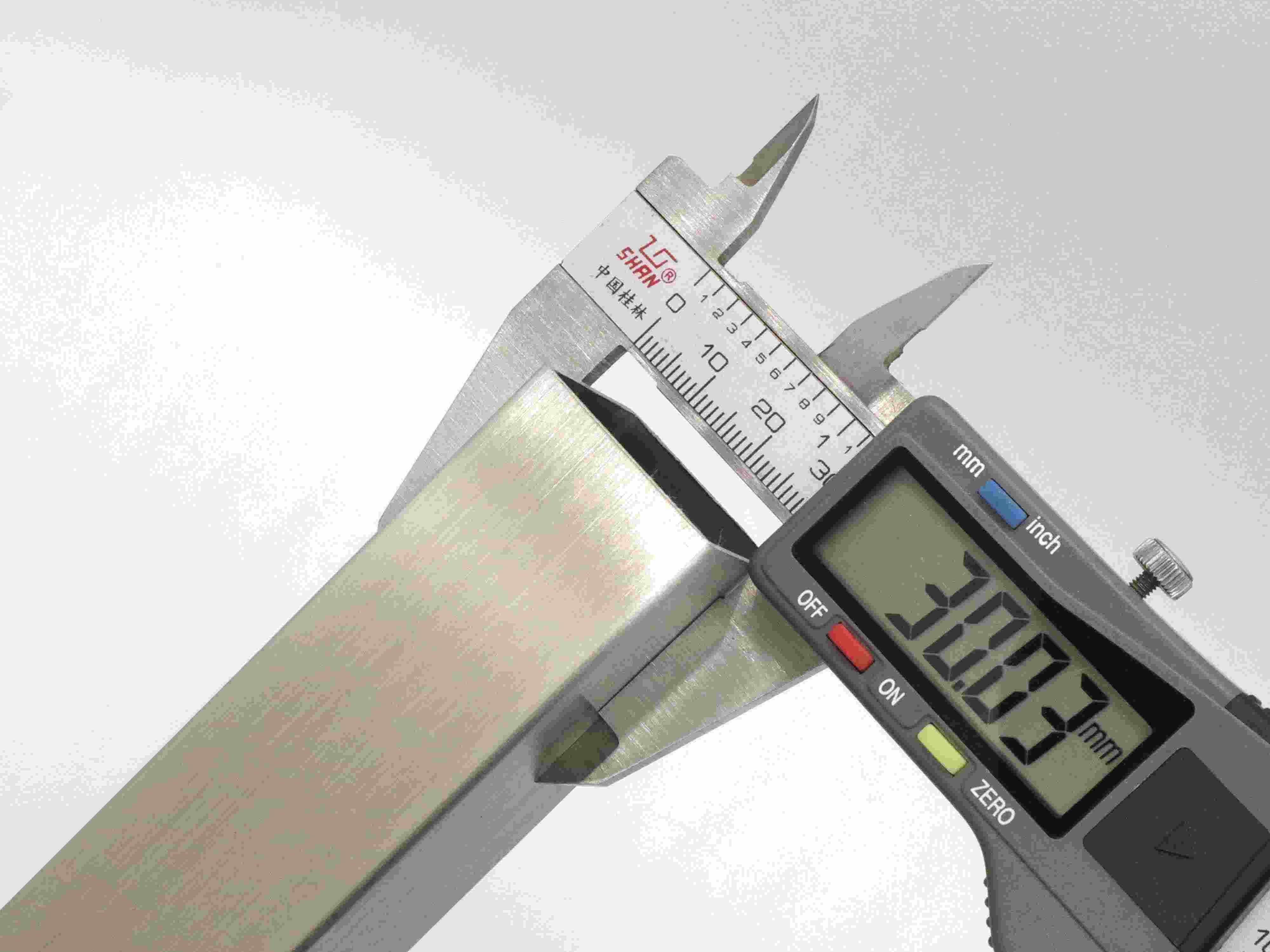
Standard Size Range: Stainless steel square tubes typically conform to standardized size ranges, commonly starting from smaller dimensions like ½ inch × ½ inch (12.7 mm × 12.7 mm) up to larger sizes such as 6 inches × 6 inches (152.4 mm × 152.4 mm). These standard sizes enable compatibility and ease of integration in various projects.
Wall Thickness Options: The wall thickness of stainless steel square tubes varies to meet specific requirements. Common thicknesses range from lighter gauges, like 18 or 16 gauge, suitable for decorative and lighter load-bearing applications, to heavier gauges, like 10 or 12 gauge, offering robustness for structural support and durability.
Customization and Tolerances: While standard sizes are prevalent, manufacturers often offer customization options to meet unique project needs. Tight tolerances for dimensions, lengths, and finishes ensure precision and adherence to project specifications, catering to specialized applications demanding exacting requirements.
Precision-cut options: Manufacturers often offer precision-cutting services, ensuring precise lengths and tolerances as per project specifications. This capability allows for tailored solutions, minimizing waste and optimizing material usage, especially in construction and fabrication projects requiring specific tube lengths.
Application-Specific Sizing: Stainless steel square tubes find application in a myriad of industries, from construction and architecture to automotive, furniture, and beyond. The choice of size depends on load-bearing capacities, structural requirements, aesthetic considerations, and the specific demands of the intended application.
Considerations for Design and Functionality: Selecting the appropriate size of stainless steel square tubes involves considering factors like load-bearing capabilities, spatial constraints, corrosion resistance, and aesthetic appeal. These tubes' dimensional variations allow for optimal design choices while ensuring structural integrity and longevity in diverse environments.
Outlined below is a generalized size chart illustrating common dimensions and wall thicknesses for stainless steel square tubes, offering a broad overview of potential sizing options available across various applications:
| Outer Dimension (Inches) | Wall Thickness (Gauge/Inches) |
|---|---|
| 1/2 x 1/2 | 18 / 0.049 |
| 3/4 x 3/4 | 16 / 0.065 |
| 1 x 1 | 14 / 0.083 |
| 1-1/4 x 1-1/4 | 12 / 0.109 |
| 1-1/2 x 1-1/2 | 11 / 0.120 |
| 2 x 2 | 11 / 0.120 |
| 2-1/2 x 2-1/2 | 10 / 0.134 |
| 3 x 3 | 10 / 0.134 |
| 4 x 4 | 10 / 0.134 |
| 5 x 5 | 10 / 0.134 |
| 6 x 6 | 10 / 0.134 |
| 8 x 8 | 10 / 0.134 |
The array of sizes available in stainless steel square tubes caters to a wide spectrum of applications, offering flexibility, durability, and reliability across industries.
The weight of stainless steel square tubes is a crucial consideration in various engineering and construction applications. Understanding the weight helps in determining load-bearing capacities, transportation requirements, and structural feasibility.
The weight of a stainless steel square tube depends on multiple factors, primarily the dimensions—specifically, the width, height, and thickness of the tube walls. Thicker walls typically contribute to increased weight, while larger dimensions overall result in a heavier tube. Additionally, the type and grade of stainless steel used also impact the weight, as different alloys possess varying densities.
Factors such as these may have an impact on the total weight of the tubing:
Stress testing of the tubing is also essential to ensure it can withstand the weight of the items it must support.
The calculation of the weight of a stainless steel square tube involves a simple formula using the density of stainless steel and the dimensions of the ss square tube. The formula typically used is:
Weight=Volume×Density of Stainless SteelWeight=Volume×Density of Stainless Steel
This calculation provides an approximate weight based on the known dimensions and the specific grade of stainless steel used.
A polished stainless steel square tube is an excellent choice for applications that require a visually attractive finish. It can be supplied in a mirror polished or brushed finish and is available in a wide range of wall thicknesses.
Its aesthetic appeal and durability make it a popular choice for many projects.
Offering a sleek, contemporary aesthetic, mirror polished stainless steel square tube is an ideal choice for a wide variety of applications. It is highly durable and can withstand corrosion, making it ideal for both decorative and structural uses. It is also easy to weld with the right techniques and tools and is available in a variety of stainless steel grades for different levels of strength.
Installation is made easy with simple mounting methods. Mirror-polished stainless steel square tubes can be used in a variety of ways, offering a cost-effective and attractive solution for many applications. Its corrosion resistance and ease of installation make it a popular choice.
Many homeowners and businesses opt for the brushed stainless steel square tubing for its sleek, modern look. The brushed texture on the stainless steel provides an appealing finish, while still showcasing the properties of stainless steel such as corrosion resistance and durability.
This type of tubing is weldable and can be made from different alloy choices, allowing it to be used in a variety of applications. Unlike mirror-polished stainless steel square tubes, brushed stainless steel square tubing requires special welding techniques, such as TIG or MIG welding.
The alloy choices for brushed stainless steel square tubing make it suitable for a variety of uses, from industrial to residential applications. As stainless steel offers corrosion resistance and durability, it is an ideal material for applications where long-lasting strength is required.
Structural-grade stainless steel square tubing stands as a cornerstone in construction and engineering applications, offering exceptional strength, durability, and corrosion resistance. Engineered to withstand heavy loads and structural stresses, these square tubes adhere to stringent ASTM standards, particularly ASTM A554, ensuring they meet specific mechanical and dimensional requirements.
Crafted from corrosion-resistant alloys, structural-grade stainless steel square tubing finds extensive use in architectural frameworks, machinery, construction supports, and other load-bearing structures. The superior strength-to-weight ratio of these tubes makes them an ideal choice for applications demanding structural integrity without compromising on aesthetic appeal.
Available in various sizes, finishes, and wall thicknesses, these tubes cater to diverse construction needs, from modern architectural designs to industrial frameworks. Whether for indoor or outdoor use, their corrosion-resistant properties make them suitable for harsh environments, ensuring longevity and minimal maintenance.
The ASTM A554 standard governs the production and quality control of these tubes, ensuring they meet rigorous criteria for mechanical properties, dimensions, tolerances, and surface finishes. Compliant with these standards, structural-grade stainless steel square tubing assures reliability, safety, and precision, meeting the demands of varied structural and engineering projects.
See Also - Grade 316 Stainless Steel Structural Tube
Stainless steel square tubing is available in a range of ornamental styles, offering a decorative option for various applications. It is often fabricated using techniques such as bending, punching, drilling, and cutting. Threaded and welded connections are common methods for joining the pieces, and the tubing offers corrosion resistance and durability.
Decorative uses for ornamental stainless steel square tubing include handrails, fencing, and architectural accents. Its smooth surface and unique shapes make it a popular choice for creating unique designs. Fabrication techniques like cutting, welding, and bending can be used to create intricate patterns and designs.
When selecting ornamental stainless steel square tubing, it is important to consider the desired application and its environment. The tubing should be chosen based on the expected use and the conditions it will need to withstand. In addition, the tubing must be chosen for its corrosion resistance and durability.
Square tube fittings are used to join sections of stainless steel square tubing. They come in a variety of types and sizes to suit different applications. Common types include butt weld fittings, cast fittings, forged fittings, and flanges. Each type of fitting has its unique advantages and disadvantages. Therefore, careful consideration should be taken when selecting the most suitable option.
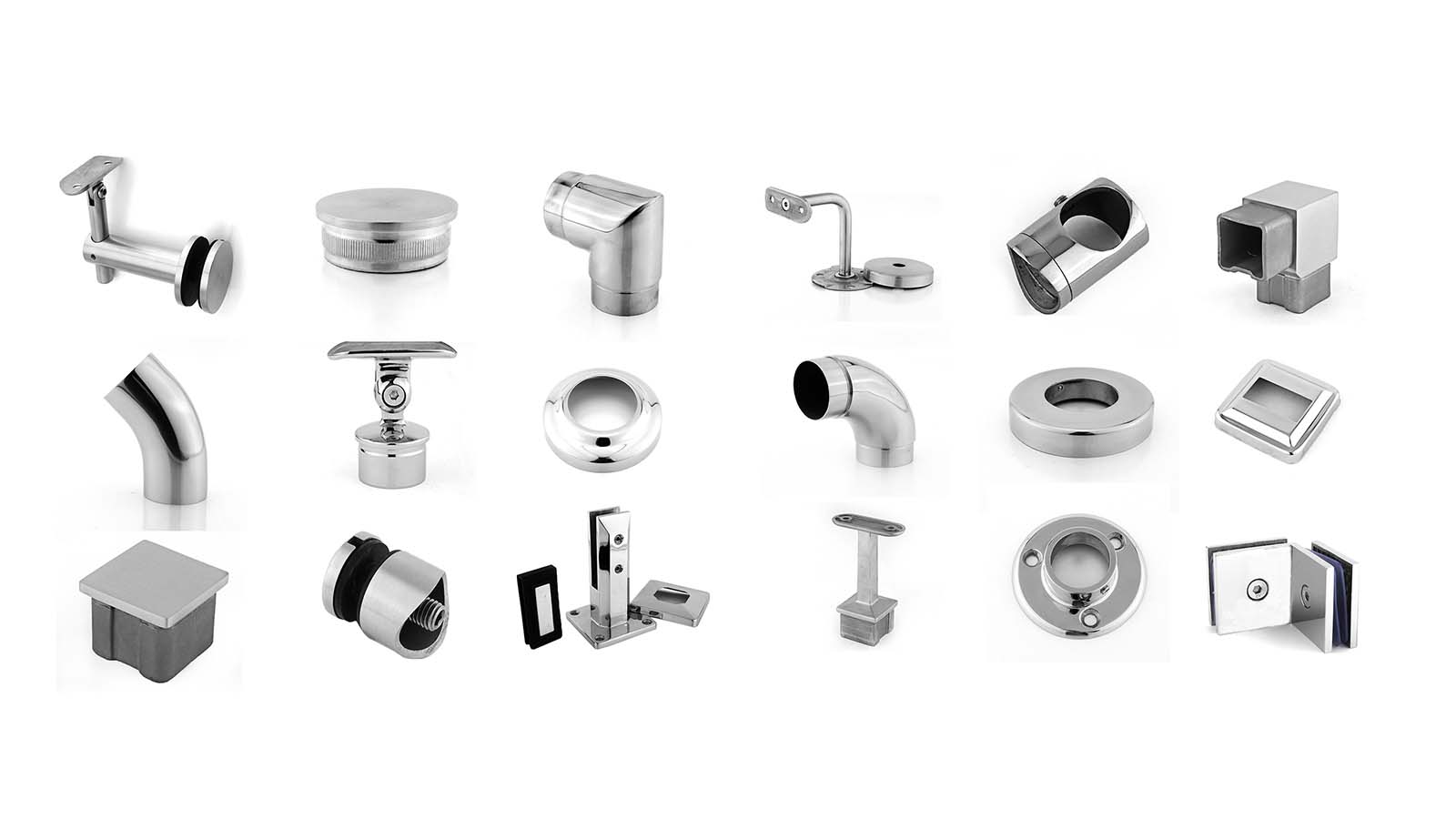
Butt weld fittings are used to join stainless steel square tubing for various projects. They offer many advantages over other connections, including better flow, reduced weight, and increased strength.
For welding techniques, stainless steel butt weld fittings require high temperatures and clean surfaces to ensure a strong bond. Additionally, stainless steel square tubing must be regularly maintained to avoid corrosion and ensure optimal performance.
The biggest difference between cast and forged fittings is the manufacturing process, as cast fittings are poured and cooled, while forged fittings are shaped by hammering and pressing. Stainless steel square tube suppliers can provide more information on the advantages, welding techniques, and maintenance of stainless steel square tubing, as well as differences between cast and forged fittings.
Ultimately, butt weld fittings are a great choice for many projects, making the transition into the subsequent section about cast fittings smooth.
Building on the discussion of butt weld fittings, stainless steel cast fittings are also commonly used to join stainless steel square tubing. Cast fittings are available in 304 and 316 stainless steel and come in sizes ranging from 1/8 to 6, with a pressure class of 150. Alloys available include aluminum, carbon, and stainless steel. The advantages of using stainless steel square tube includes its corrosion resistance, fabrication potential, and welding techniques. Applications of stainless steel square tubes include piping, industrial equipment, and structural components.
| Advantages | Applications |
|---|---|
| Corrosion resistance | Piping |
| Fabrication potential | Industrial equipment |
| Welding techniques | Structural components |
Frequently used in the same applications, stainless steel forged fittings are also an ideal choice for connecting stainless steel square tubing. These fittings offer a variety of benefits, including:
Advantages of using threaded fittings also include a secure connection, and the ability to adjust and re-tighten the fittings, while socket weld fittings provide a permanent connection and require more skill to install. Both types of fittings offer superior strength and reliability and are used in a wide range of applications.
Flanges are a type of stainless steel square tube fitting used to connect sections of tubing. They are available in different types, sizes, and materials and can be used in a variety of stainless steel square tube applications.
Advantages of stainless steel square tube fittings include corrosion resistance, strength, and durability. Stainless steel square tubes are available in a variety of sizes and dimensions, including outside diameter, wall thickness, and length. It also comes in a variety of finishes, such as hot rolled, cold rolled, and pickled & oiled.
Stainless steel square tube suppliers provide products that meet industry standards for quality and performance. When selecting a supplier, it is important to consider the company's reputation, experience, and services.
"The cost of square tubing largely depends on the material, finishing options, and installation techniques. As buying tips, it is important to consider corrosion resistance, weight considerations, and finishing options. 'A stitch in time saves nine', so investing in quality and proper installation techniques can bring long-term cost savings.
Stainless steel square tubing is renowned for its corrosion protection, dimensional accuracy, wear resistance, and seamless welding. Its longevity depends on proper installation techniques and maintenance. With these measures, it can provide long-term performance and reliability.
When it comes to cleaning stainless steel square tubing, it is important to take measures to prevent rust and use proper polishing techniques. Additionally, welders should be aware of the necessary precautions when welding and keep the surface maintained. Lastly, installation advice should be taken into consideration when installing the tubing.
When working with any metal, it's important to consider the necessary tools and techniques needed to create quality products. From welding and forming to cutting and quality control, stainless steel square tubing requires a set of specialized tools to ensure optimal performance. To get the most out of the material, it's essential to have the right equipment and experience to prevent corrosion.
Structural-grade stainless steel square tubing is designed primarily for structural applications such as load-bearing tasks, while ornamental stainless steel square tubing is used for decorative purposes. Structural grade has higher corrosion resistance, greater structural strengths, and better heat conductivity, while ornamental grade has better polishing techniques and welding applications.
Stainless steel square tubing is a versatile and strong material, with a variety of grades, finishes, and specifications available.
From structural-grade to ornamental, stainless steel square tubing can be used in a multitude of applications.
With its strength and corrosion-resistant qualities, how can one not take advantage of this remarkable material?
